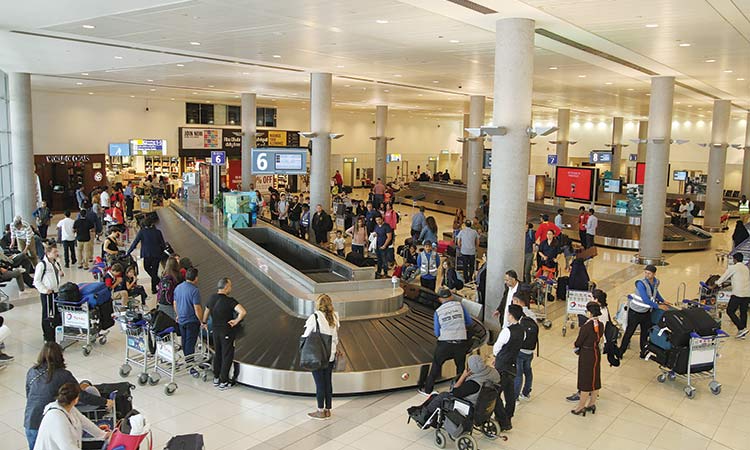Abu Dhabi airport connects the world to the emirate for 40 years

Abu Dhabi Airport was among the first to introduce contactless gates and touchless elevators during the pandemic.
Sheikh Mohammed Bin Hamad Bin Tahnoon Al Nahyan, Chairman of Abu Dhabi Airports said: “Abu Dhabi International Airport has connected the world to Abu Dhabi for 40 years and fuelled the emirate’s emergence as a leading destination for tourism, trade and commerce.”
“It was the late Sheikh Zayed Bin Sultan Al Nahyan who had the foresight to build the airport and thanks to his vision Abu Dhabi Airports has built a legacy forged by collaboration, innovation and service. It is a legacy that will continue to grow over the next 40 years as it supports the ongoing social and economic development of Abu Dhabi and the UAE.”
The airport was first conceived in 1974, in response to the government’s plans to modernise the newly formed UAE. Construction on the new airport began in 1979 and the new Abu Dhabi International Airport was officially opened on Jan.2, 1982 featuring a circular satellite terminal with a single connection to a semi-circular terminal.
During the late 1990s and early 2000s, the terminal was expanded to cater for the increase in passenger numbers. Etihad became the national carrier and the home airline in 2003 which was a catalyst for rapid growth and paved the way for the opening of Terminal 2 in September 2005, a second runway (Runway 13L/31R) in 2008 and Terminal 3 in January 2009 boosting the airport’s capacity to 12 million passengers per year.
The airport has also been home to a number of ‘firsts’. In 2014, AUH introduced the first United States border preclearance facilities in the Middle East to facilitate the processing of passengers on direct flights for entry into the United States before they board their planes.
AUH launched the Smart Travel System in 2016, the first of its kind in the region, to ease passenger processing and enhance the customer experience.
During the early onset of the COVID-19 pandemic in 2020, AUH was among the first to introduce contactless gates and touchless elevators to complement its wide array of health & safety measures.
Technology will also be front-and-centre at the airport’s new Midfield Terminal Building. Construction of the Midfield Terminal Complex started in 2012 and is now 97 per cent complete. Once opened, the Midfield Terminal Building will accommodate up to 45 million passengers per year whilst providing an exceptional passenger experience for the next 40 years.
Providing value for money has also been a core proposition at AUH. Most recently, consumers have benefited from the additional choice provided by the introduction of services by low-cost carriers Wizz Air Abu Dhabi and Air Arabia.
“Abu Dhabi International has a proud history of providing world-class infrastructure and top-flight service whilst serving as a catalyst for growth for 40 of our proud nation’s 50 years of achievement,” commented Shareef Al Hashmi, CEO, Abu Dhabi Airports.
“As consumer confidence rebounds and traffic gradually recovers, we will continue to explore new technologies, products and ways of doing business that will drive improved sustainability and create industry-leading airport experiences. As proud as we are of our past achievements, we are equally excited about our bright future.”
Abu Dhabi Airports is part of ADQ, one of the region’s largest holding companies with a diverse portfolio of major enterprises spanning key sectors of Abu Dhabi’s non-oil economy.
It was established in March 2006 to spearhead the development of the Emirate’s aviation infrastructure.
In September 2006, Abu Dhabi Airports assumed responsibility for the operation and management of Abu Dhabi and Al Ain International Airports. In 2008, Abu Dhabi Airports added Al Bateen Executive Airport (an exclusive business aviation airport), as well as Sir Bani Yas and Delma Island Airports to its portfolio. These airports are geared to serve the various segments of air travellers, the aviation marketplace, and will help contribute to Abu Dhabi’s development as a destination for both business and leisure tourism.
Currently under way is the multi-billion-dollar re-development and expansion of Abu Dhabi International Airport designed to increase the overall capacity of the airport.







